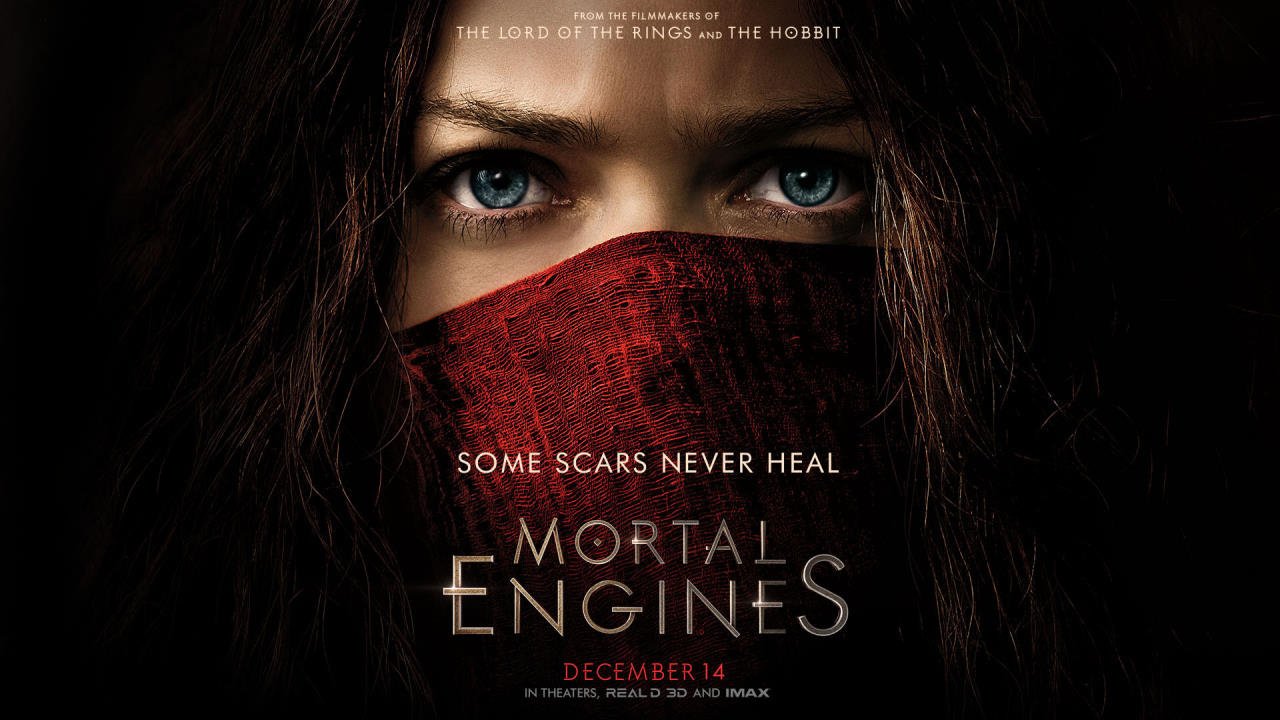Mortal Engines (2018)

“Mortal Engines” (2018), directed by Christian Rivers and produced by Peter Jackson, is a visually stunning post-apocalyptic adventure based on Philip Reeve’s 2001 novel of the same name. Set in a distant future where cities have become massive, mobile machines that devour smaller towns to survive, the film offers a unique concept but struggles with pacing and character development, resulting in a mixed reception.
Plot Overview:
Mortal Engines is set in a dystopian future where Earth has been ravaged by a cataclysmic event known as the “Sixty Minute War.” In this world, cities now exist on enormous traction wheels and move across the wastelands in a system known as “Municipal Darwinism,” where larger, more powerful cities hunt and consume smaller ones for resources.
The story follows Hester Shaw (Hera Hilmar), a scarred and mysterious young woman seeking revenge on Thaddeus Valentine (Hugo Weaving), a powerful figure from the mobile city of London. Valentine is responsible for the death of Hester’s mother, and she has been on a mission to kill him ever since. Along the way, she teams up with Tom Natsworthy (Robert Sheehan), a historian from London who is thrust into the wasteland after discovering Valentine’s dark secrets. Together, they must navigate the dangers of the post-apocalyptic world, uncover a deadly conspiracy, and prevent a weapon of mass destruction from threatening what’s left of humanity.
What Works:
- Visual Effects and World-Building: One of the film’s greatest strengths is its breathtaking visual effects. The massive, moving cities are intricately designed and awe-inspiring, with the film’s steampunk aesthetic creating a unique and immersive world. The visual representation of a post-apocalyptic future where entire cities roam the Earth is one of the most imaginative aspects of the film, and the action sequences are executed with precision and flair.
- Unique Concept: The idea of cities as gigantic mobile machines that “consume” smaller towns is fresh and original, providing a fascinating backdrop for the story. The world of Mortal Engines is filled with intriguing lore, from the Traction Cities to the anti-tractionist resistance, making it a visually rich and conceptually ambitious setting.
- Hugo Weaving’s Performance: Hugo Weaving delivers a strong performance as Thaddeus Valentine, the film’s main antagonist. He brings his usual gravitas to the role, portraying a complex villain with his own ambitions and motivations. His presence adds weight to the film, even when the storyline falters.
- Action Sequences: The film features several exciting and well-choreographed action sequences, particularly in the early scenes involving London’s pursuit and “consumption” of a smaller city. The aerial battles and combat scenes, while not groundbreaking, are entertaining and visually impressive.

What Could Be Better:
- Weak Character Development: One of the film’s biggest shortcomings is the lack of depth in its characters. Despite Hester’s compelling backstory and her quest for revenge, her character arc feels underdeveloped, and her emotional journey lacks the necessary impact. Similarly, Tom Natsworthy, who serves as her companion, comes across as somewhat bland, and the chemistry between the two leads feels forced. Many of the supporting characters, including the anti-tractionists and resistance leaders, are introduced but never fully fleshed out.
- Rushed Plot and Pacing Issues: The film attempts to condense a complex, multi-layered novel into a two-hour runtime, resulting in a narrative that feels rushed and cluttered. Major plot points and character relationships are introduced too quickly, giving little time for emotional resonance or meaningful development. The film often jumps from one action set piece to another without allowing the audience to fully invest in the story or its characters.
- Clichéd Storyline: While the world-building is unique, the film’s underlying plot is fairly formulaic, relying on standard young-adult dystopian tropes like a rebellion against an oppressive regime and a secret weapon that could destroy the world. The storyline lacks the originality and emotional depth that could elevate it above other entries in the genre, making it feel derivative at times.
- Wasted Potential of Shrike: Shrike (Stephen Lang), a reanimated cyborg and one of the film’s most interesting characters, is introduced as a menacing figure from Hester’s past. While his relationship with Hester adds some emotional depth, his arc is ultimately underused and rushed. His storyline feels like it could have been more central to the plot, but instead, it is hastily resolved without fulfilling its potential.

Conclusion:
Mortal Engines is a visually spectacular film with an intriguing concept, but it falls short in its execution due to weak character development and a rushed, formulaic plot. While the world-building and special effects are impressive and immersive, the film struggles to create emotional connections with its characters, leaving viewers more engaged with the visual spectacle than the story itself.
For fans of post-apocalyptic adventure films or those intrigued by its ambitious premise, Mortal Engines may offer some entertainment value. However, it ultimately feels like a missed opportunity, unable to fully capitalize on its imaginative setting and source material.











